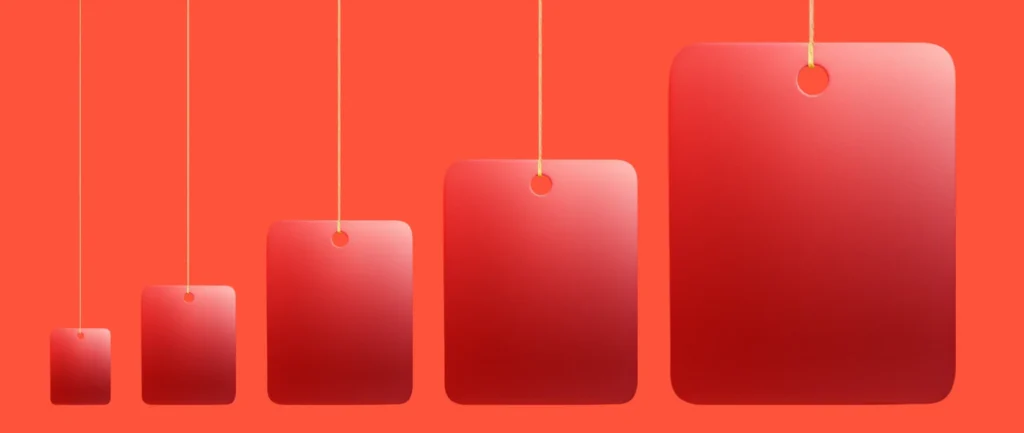Transforming your crochet hobby into a business requires some thoughtful planning. Learn tips and techniques from crochet artist and author Genna Tatu.
Grandmas know best: Crochet has always been cool. A new generation of makers has taken simple stitches under their wing and created a veritable paradise of handmade crafts, featuring anything and everything you could ever want, rendered in yarn.
Once you take the leap from crochet hobbyist to entrepreneur, choosing which crochet items to sell in a saturated market can feel overwhelming. Read on for expert strategies for selecting profitable crochet products, pricing them effectively, and building a thriving handmade business with insights from successful crochet entrepreneur and author Genna Tatu.
How to create a product catalog for your crochet business
- Choose items
- Showcase your products
- List your products
- Experiment with social media content
- Consider investing in paid ads
- Choose items
Your product portfolio will often reflect the crochet projects you enjoy most, and that’s perfectly fine. Genna gravitated toward plushies and now her online store, CrochetByGenna, specializes in crocheted plushies and downloadable patterns. “I always jumped from hobby to hobby, but with crochet, I was like, this feels right. I had so many plushies because I was just crocheting all the time. So I kind of started my business by accident,” Genna says.
If you’re not sure which direction to take when deciding what to sell, here are three strategic approaches to consider:
Specialist. Taking a specialized approach means carving out a niche in one corner of the crochet world, be it plushies, throw pillows, or scrunchies, and developing a signature style. Focusing on one product or genre allows you to build up a reputation as a go-to source for it and provides an opportunity to create unique depth in your portfolio.
Evergreen. Maybe you want to be a one-stop shop for crochet customers, eliminating their need to visit other vendors for products, supplies, or patterns. The benefit of evergreen products, like baby gear, apparel, and home décor, is that they will always be in demand. Dedicating your crochet business to these essentials still offers space for creativity, like holiday collections or personalized order options.
Trending. Specializing in trending items requires a close eye on the industry and a willingness to quickly learn something new when interest starts to build (but before it hits its peak). For forecasting insights, you might follow crochet blogs, popular social media accounts that analyze greater trends from the fashion industry at large, and online crochet communities (like Club Crochet on Discord) for clues as to which way the trends are going.
“Keep producing the things that are showstoppers, that get people’s attention,” Genna says. “When Moo Dang was popular, that baby hippo? I made a Moo Dang pattern. Continue thinking outside the box and show people something that has never been made before.”
- Showcase your products
High-quality product photos are critical to your online store and social media channels, and there are many different ways to go about getting them. You can get fancy with equipment and staging, or you can use your phone along with some natural light and a makeshift backdrop to great effect. Experiment with a mix of studio photography (your products on a simple backdrop with bright lighting) and lifestyle photos (your crochet ornament on a Christmas tree) to see which style suits your brand best.
- List your products
How you release your crochet products depends on your personal preference and how much time you want to spend making orders versus managing your online (or in-person) business. Here are a few examples of different setups and their implications:
Drops vs. on-demand. A drop is a batch of products you make and release, selling the drop until items run out. On-demand means you make a new product whenever you get a new order. “A lot of crocheters do drops, because you don’t have to constantly make orders,” Genna explains. “When I first started out, I was a made-to-order shop. That got too crazy and burnt me out. Especially when you become more popular, but you’re only one person, you have to limit it. Now, whatever products I’ve made over two months, I’ll list them on the website, and people can buy them.”
Finished products vs. crochet patterns. Crochet patterns are downloadable instructions for making crocheted items. Genna sells both products and crochet patterns through her Shopify store and Etsy page, but she also hosts a Patreon, CrochetByGenna, where supporters receive one or two free patterns each month, depending on their tier. “At least one pattern or one new product each month will keep you competitive,” she says. “People who don’t put out new patterns or new products frequently kind of get lost in the sauce.”
Online vs. in-person. Selling crochet items at craft fairs and local makers’ markets can be a great way to meet your customers in person, get a feel for what products catch people’s eyes, and build community. An online store allows you to sell crochet patterns at scale and reach customers beyond your local area. Consider which method appeals to your lifestyle and whether you could do a little bit of both.
- Experiment with social media content
Crafting a visual marketing strategy can feel intimidating when you’re just starting out, but Genna’s advice is to start small and experiment with different channels and content types. She initially built her audience by posting a steady stream of finished product shots, but things really began to take off once she stepped in front of the camera. “Because it’s such a fun hobby, I thought I should document my process. There weren’t a lot of crochet YouTubers a few years ago, and I wanted to break into that space,” she says. Showing off her crochet skills behind the scenes became a pivotal moment in her business, but first, she had to overcome her natural shyness.
“It’s hard and awkward when you first start out,” she says. “Try to incorporate it slowly. It doesn’t have to go from never touching social media to starting a YouTube channel and talking to the camera for an hour. Slow increments are fine. If you’re showing off a pattern or a new plushie that you made, share one shot of you and then you pan to the thing. Eventually, over time, it will get easier.”
- Consider investing in paid ads
To get your business off the ground, paying for exposure can make sense. “Once you start your shop, you’re amongst thousands, so you really need to prioritize getting those first few sales,” Genna says. She credits her decision to invest in Etsy’s paid marketing tool with jump-starting her customer base. “Once you start getting those first few sales, you also get those first few reviews. That’s how you start building your shop’s reputation and drawing customers in, because [otherwise] they’ll look at your shop and say, ‘Oh, Genna has zero sales. I’m not buying from her.’”
Consider placing paid search ads, social media ads, display ads, or other types of paid advertising depending on where your target audience spends their time.
Tips for pricing your products
- Research the competition
- Cast a wide net
- Use strategic discounts
Top 17 crochet items that sell
- Amigurumi
- Keychains
- Hats and headbands
- Sweaters and cardigans
- Shirts
- Ponchos
- Wall hangings
- Blankets/throws
- Pillows
- Coasters
- Plant hangers
- Holiday decorations
- Bags
- Scarves and gloves
- Scrunchies
- Baby gifts
- Face scrubbies








